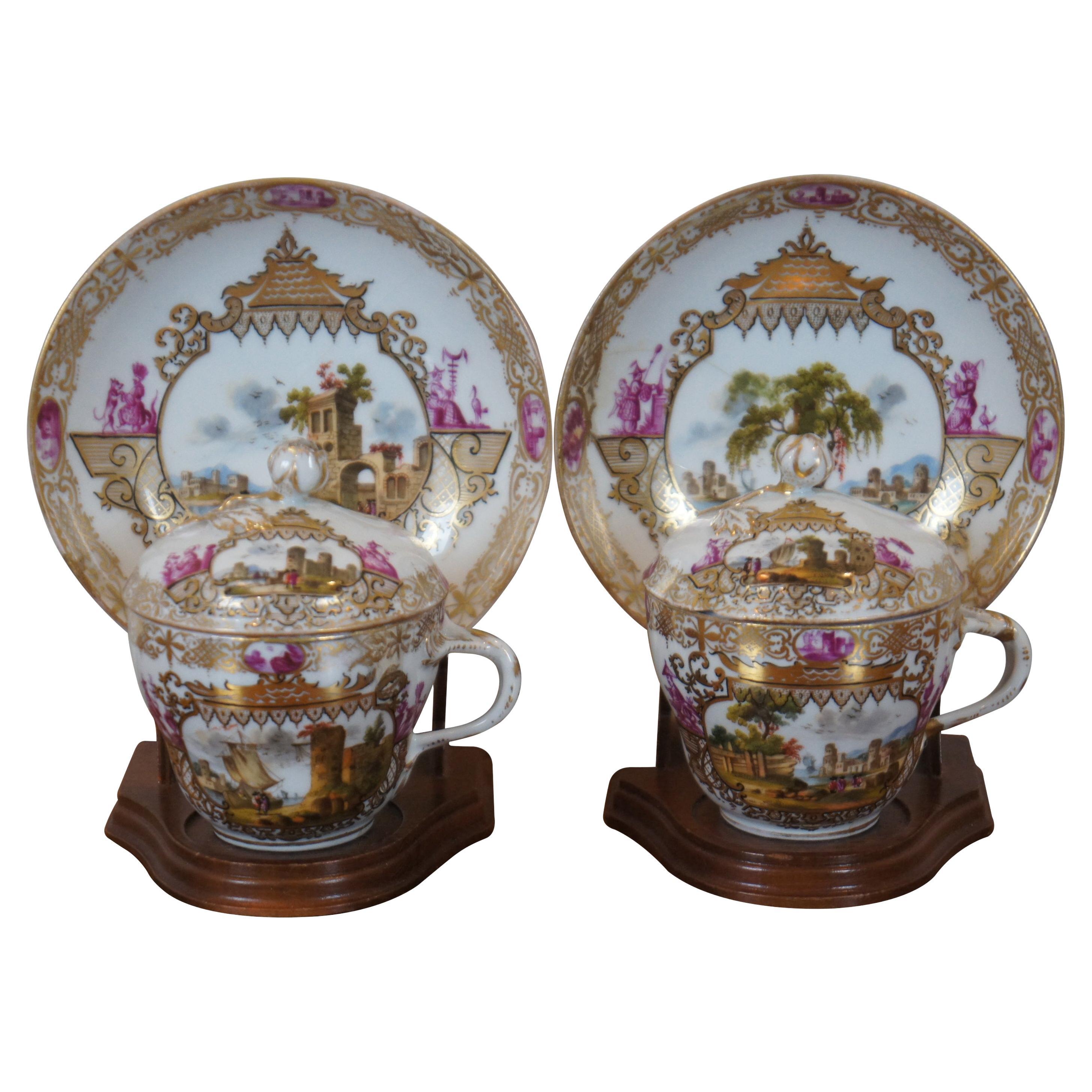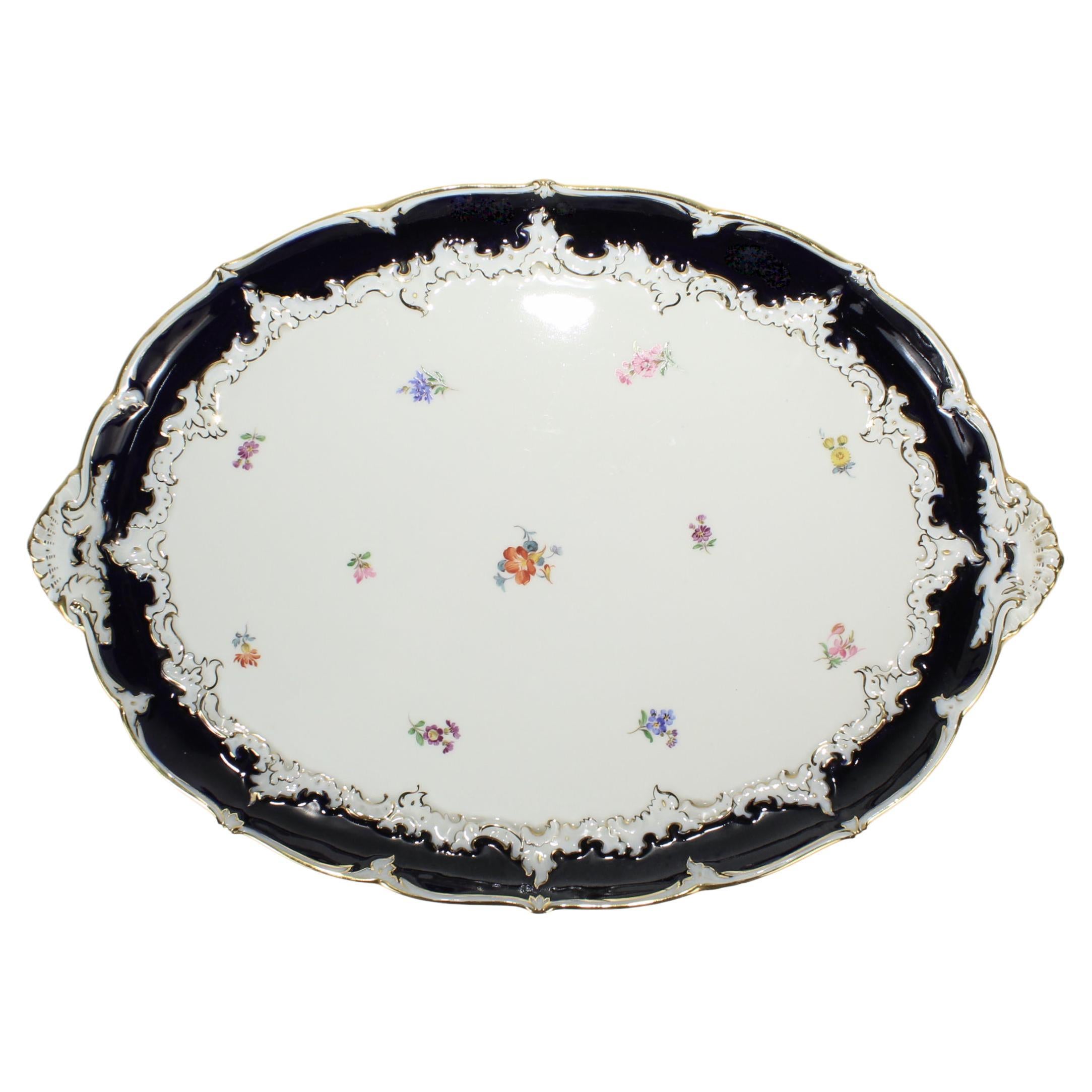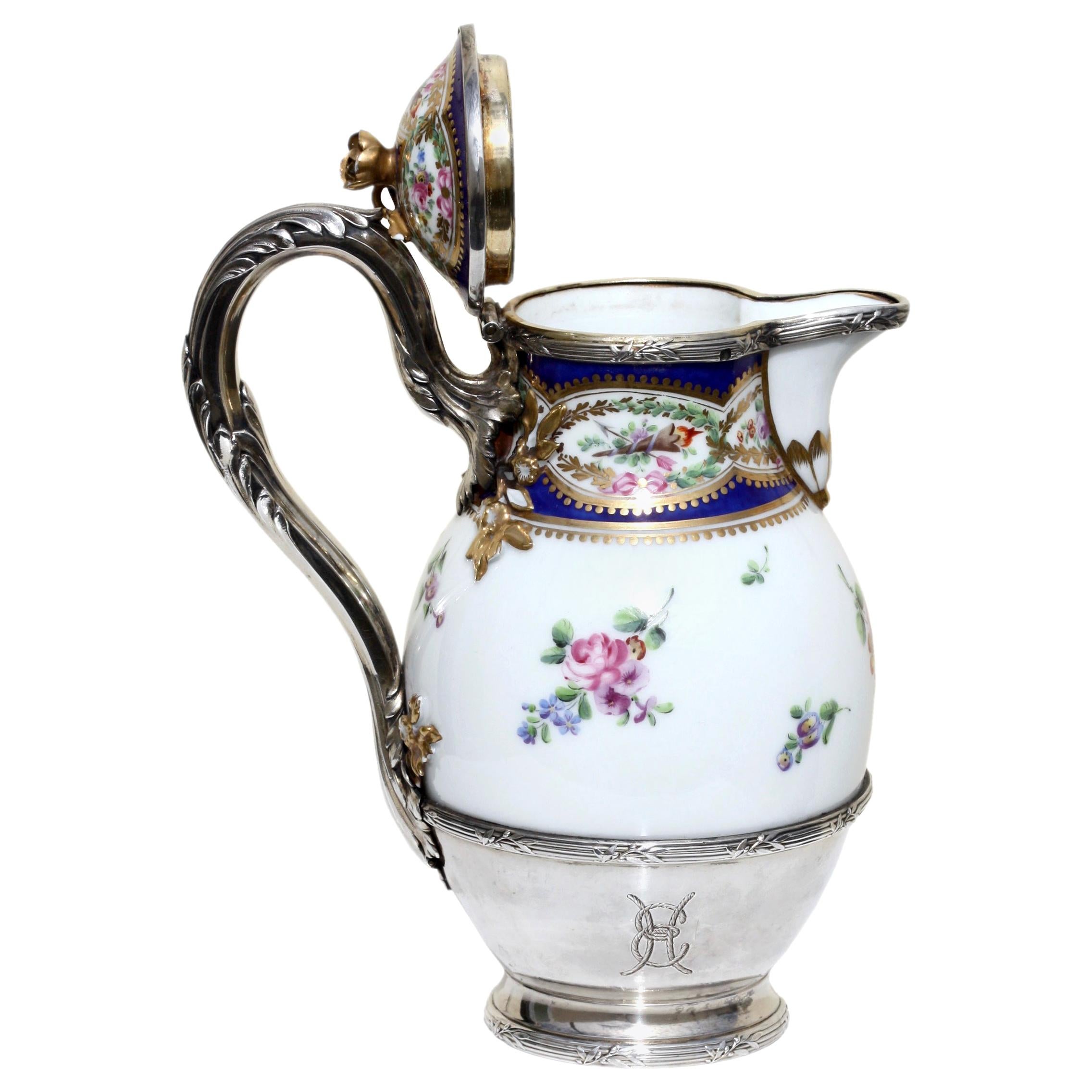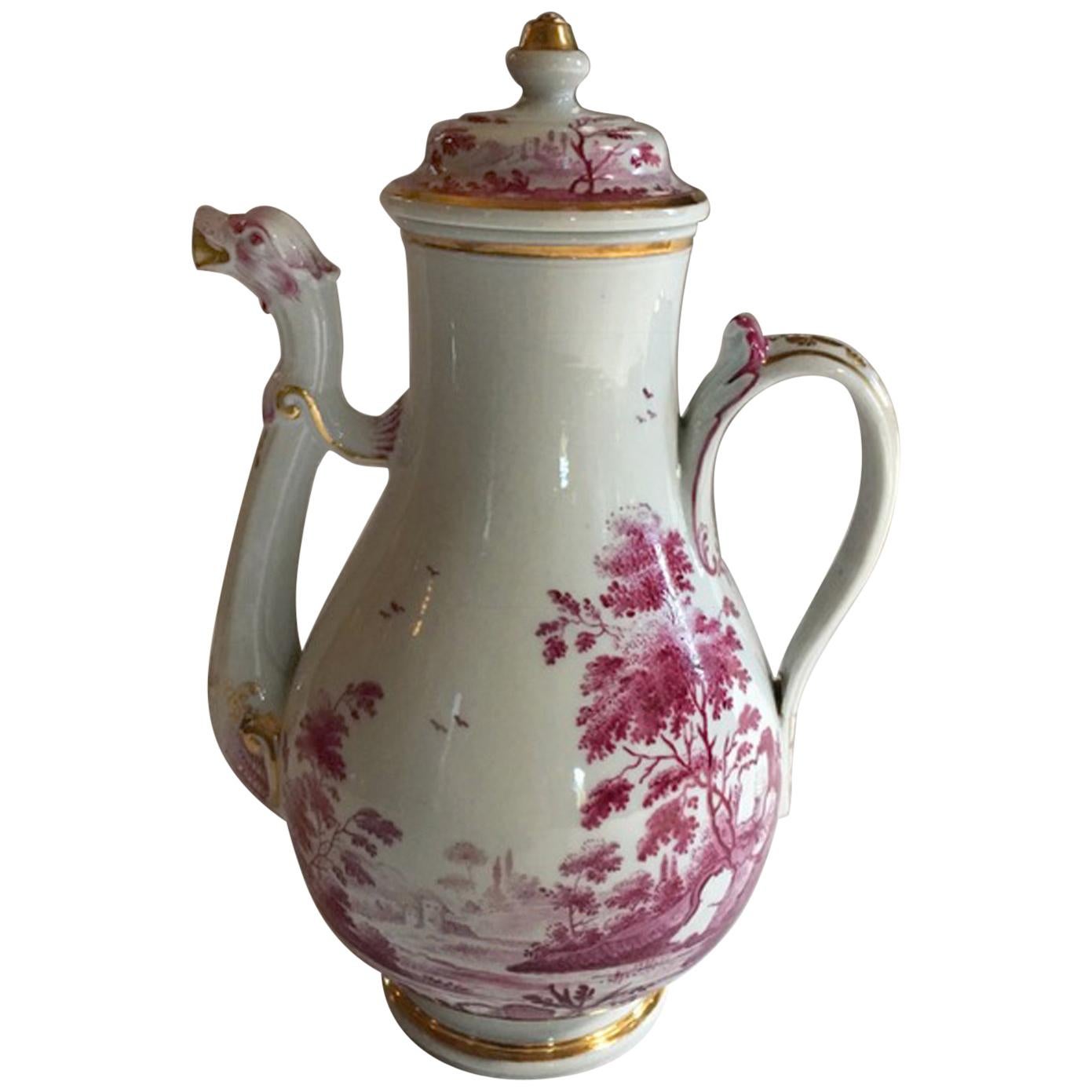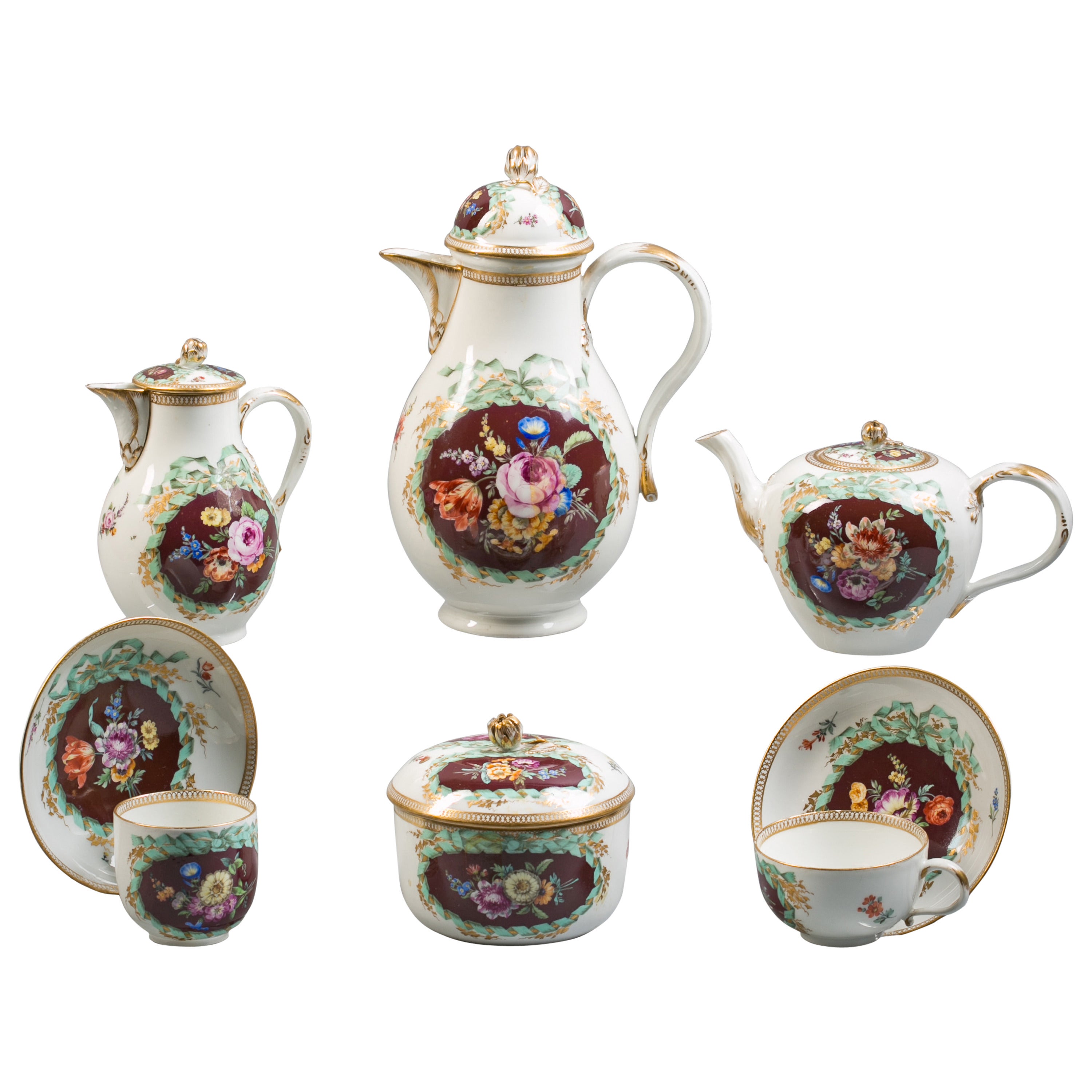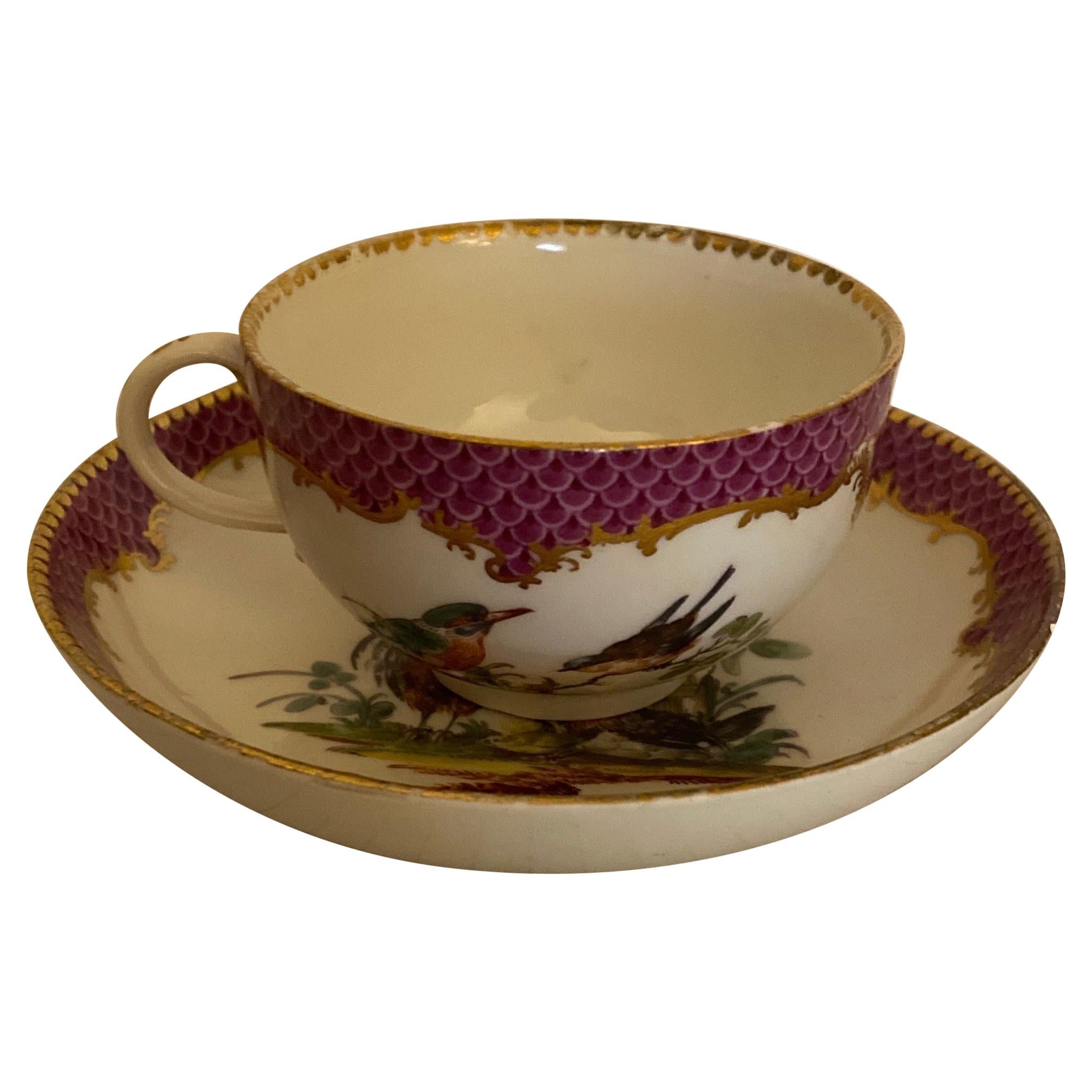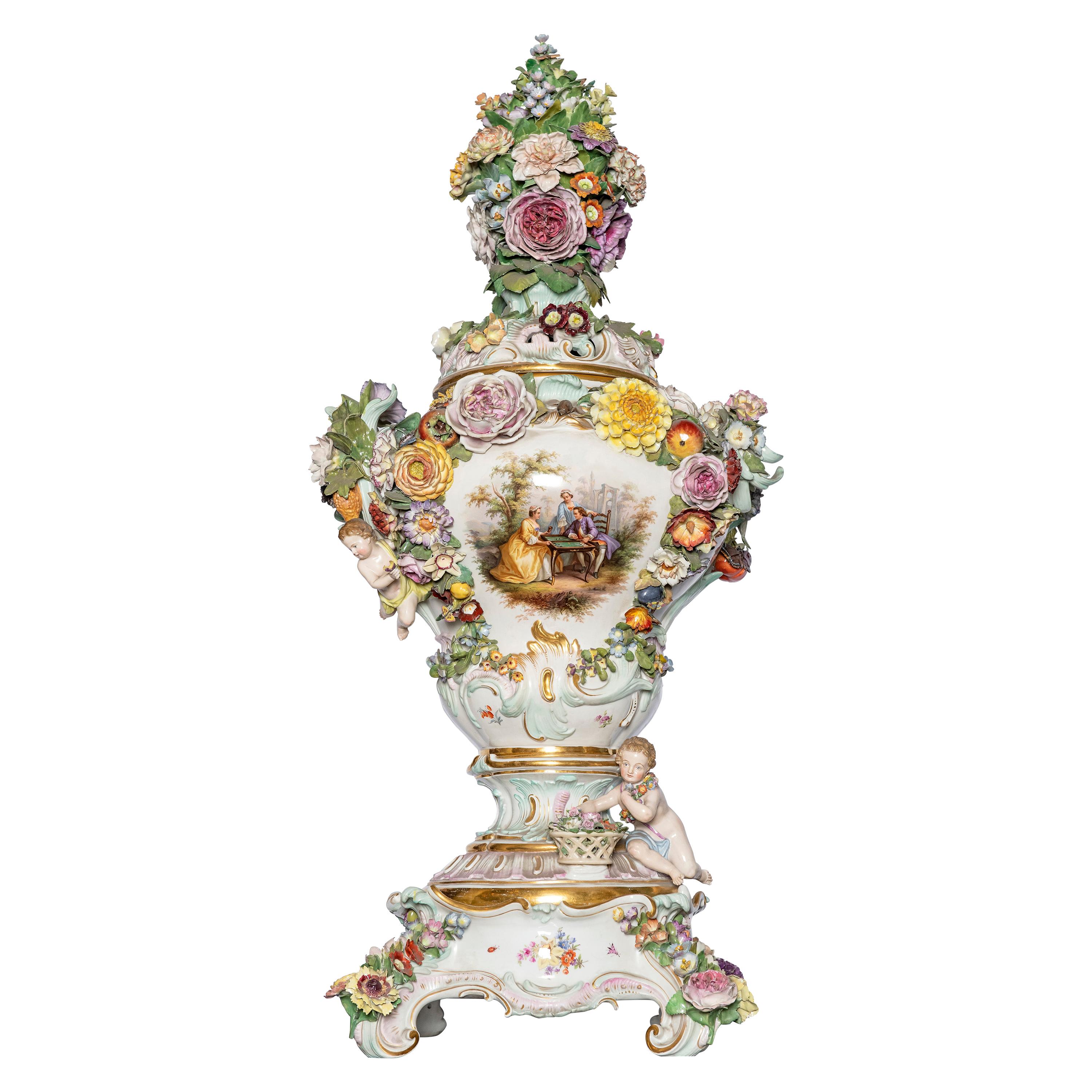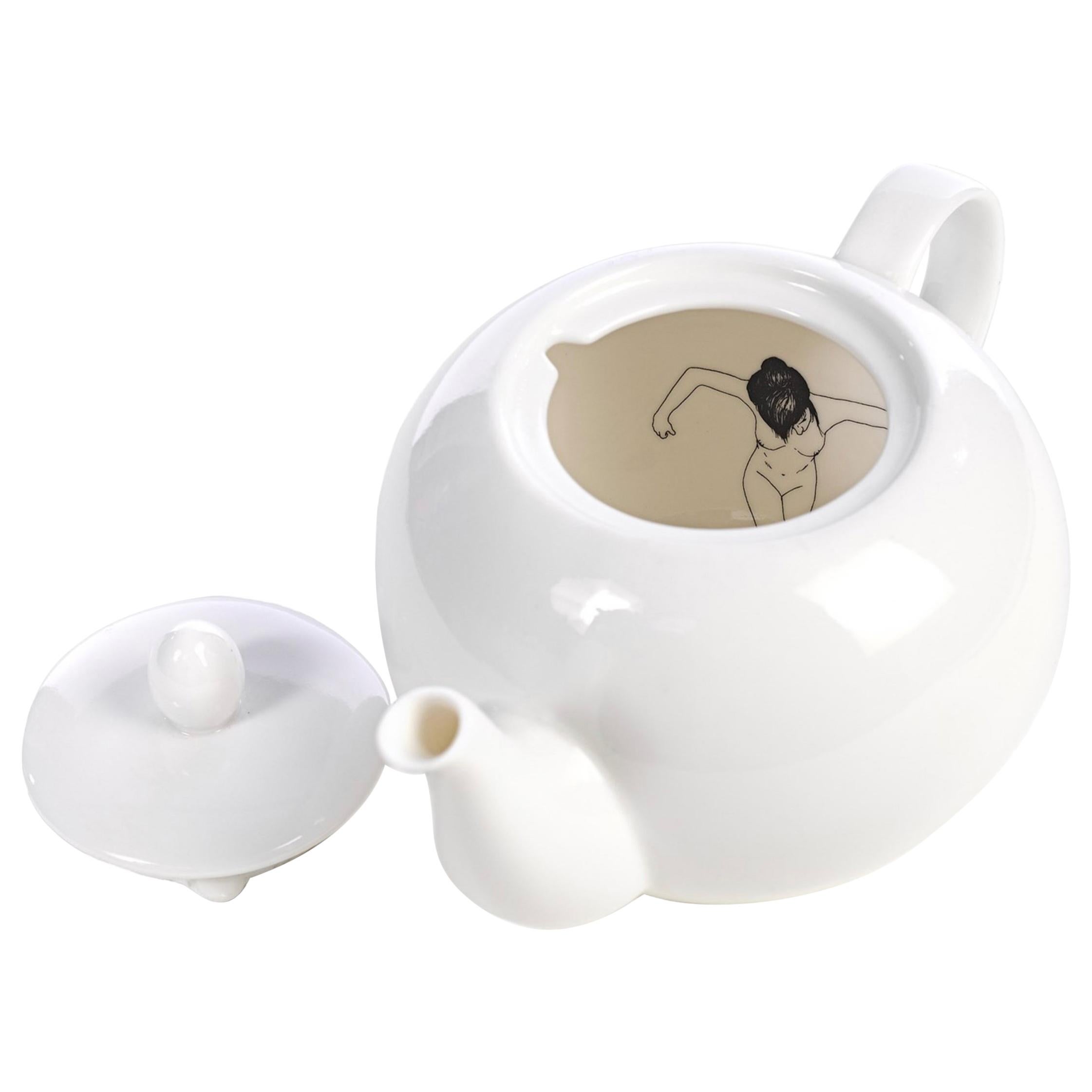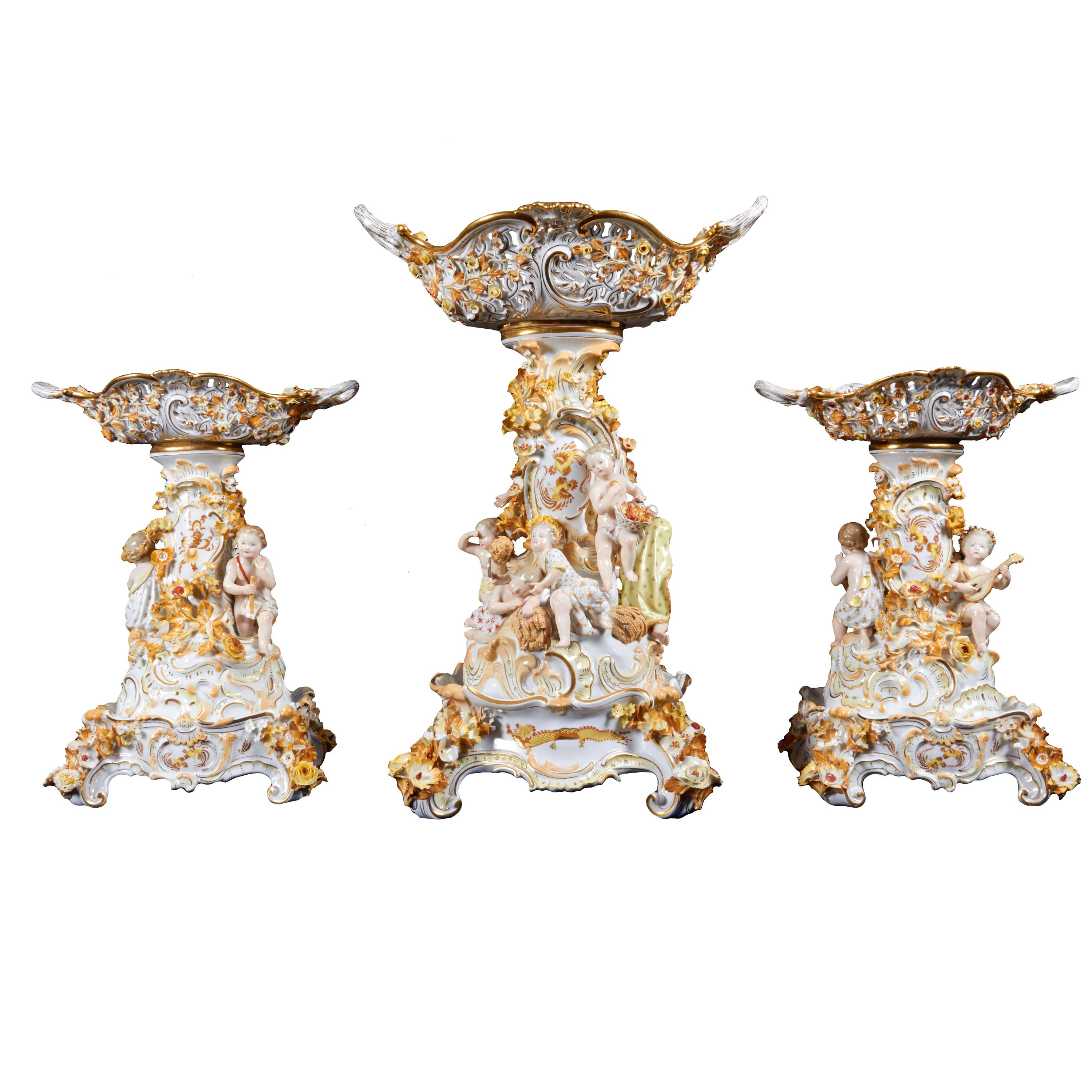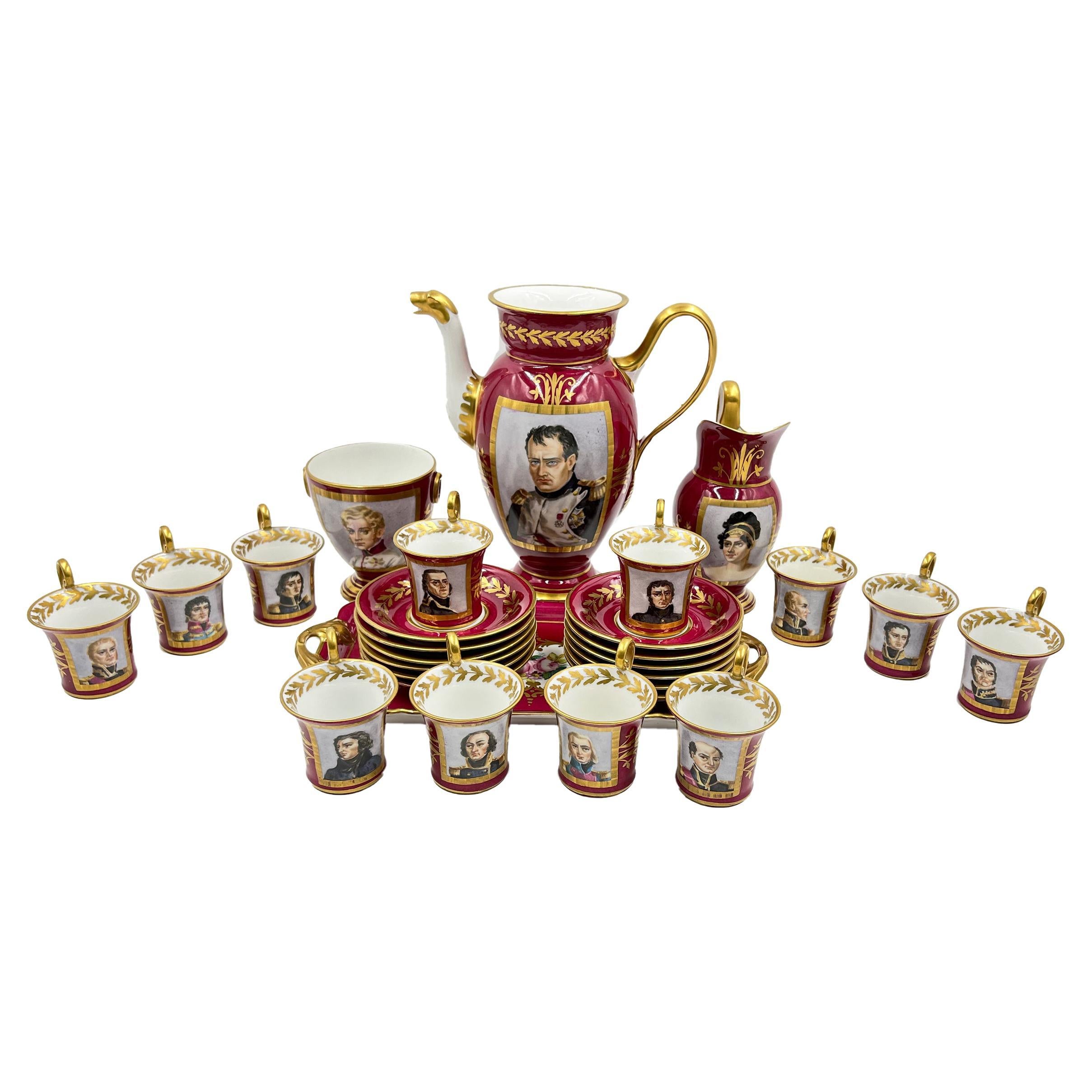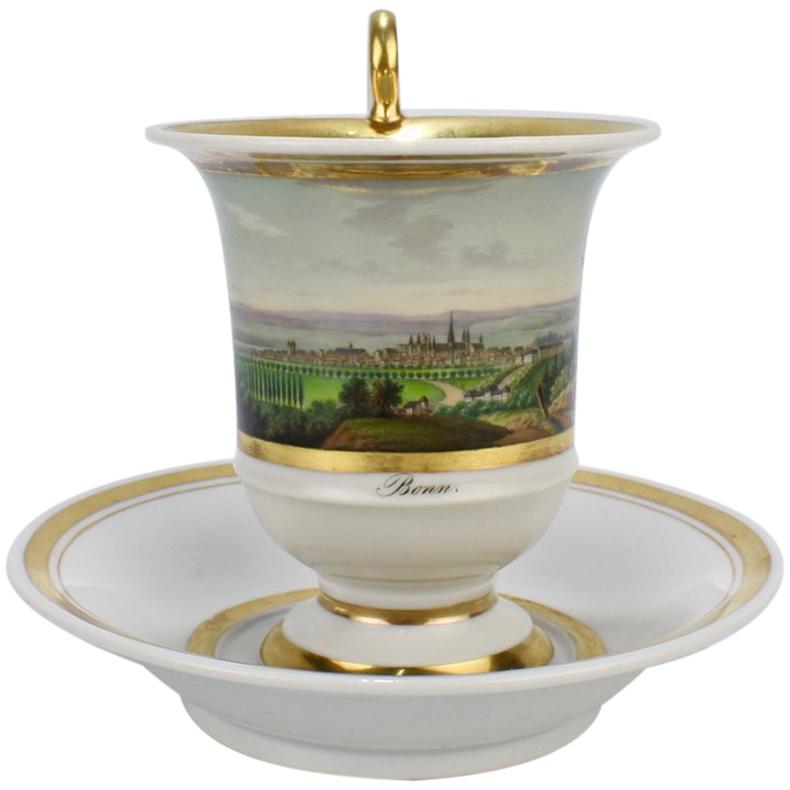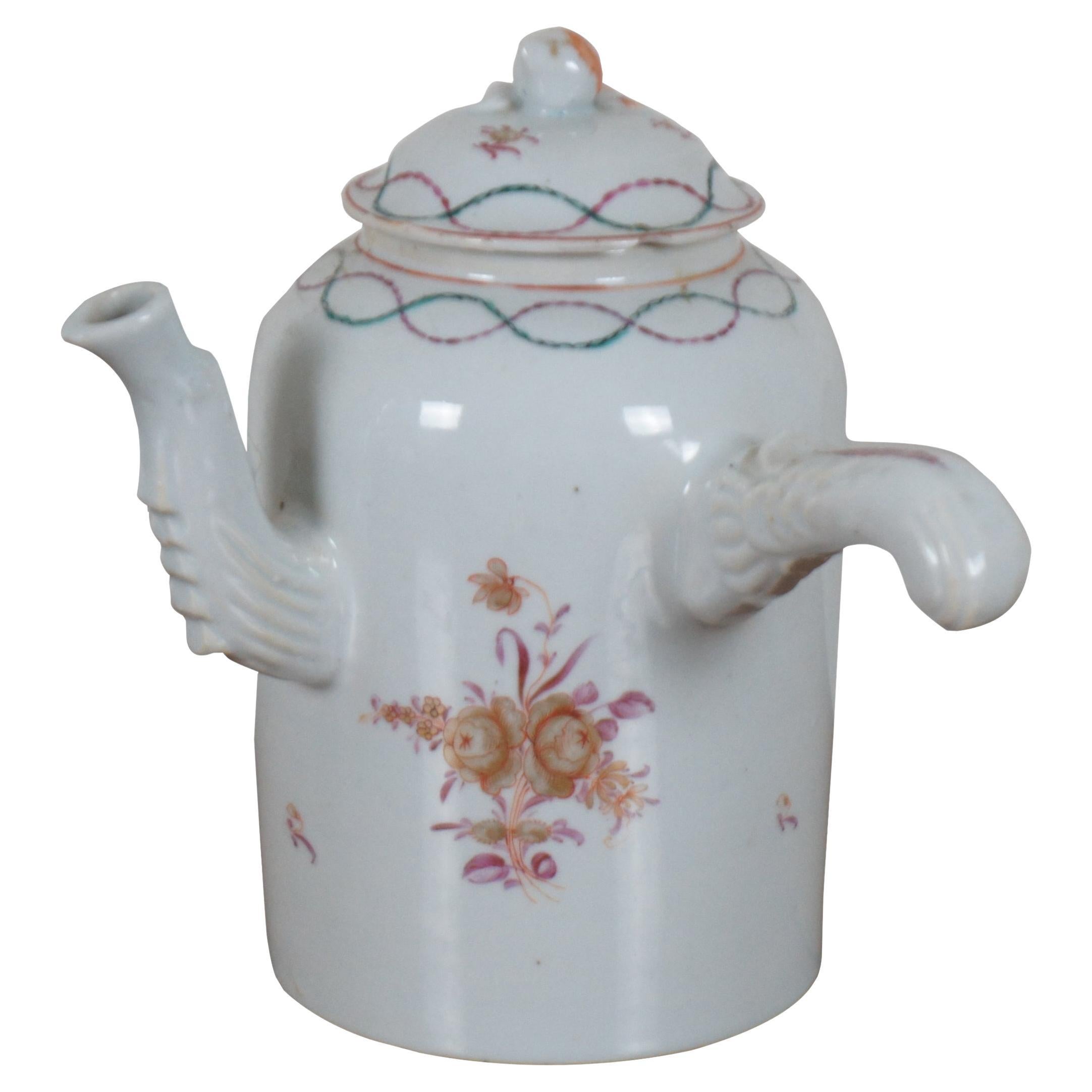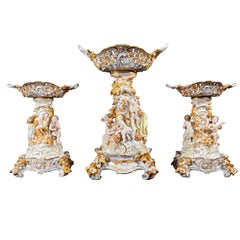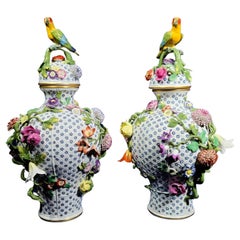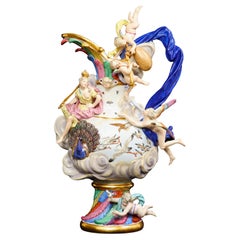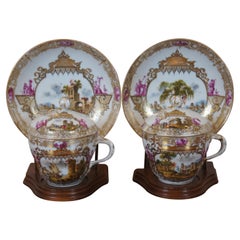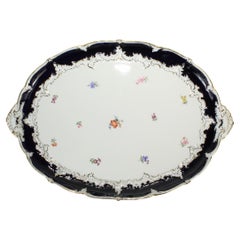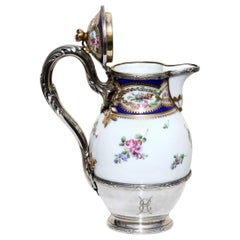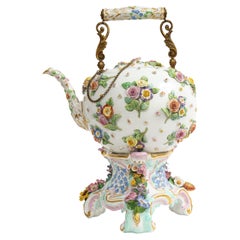
A 19th C. Meissen Porcelain Flower Encrusted Tea Pot w/ Meissen Porcelain Stand
View Similar Items
A 19th C. Meissen Porcelain Flower Encrusted Tea Pot w/ Meissen Porcelain Stand
About the Item
- Creator:Meissen Porcelain (Manufacturer)
- Dimensions:Height: 15.5 in (39.37 cm)Width: 11 in (27.94 cm)Depth: 9 in (22.86 cm)
- Style:Rococo (In the Style Of)
- Materials and Techniques:
- Place of Origin:
- Period:
- Date of Manufacture:1880
- Condition:Wear consistent with age and use.
- Seller Location:New York, NY
- Reference Number:1stDibs: LU919528535182
Meissen Porcelain
Meissen Porcelain (Staatliche Porzellan-Manufaktur Meissen) is one of the preeminent porcelain factories in Europe and was the first to produce true porcelain outside of Asia. It was established in 1710 under the auspices of King Augustus II “the Strong” of Saxony-Poland (1670–1733), a keen collector of Asian ceramics, particularly Ming porcelain.
In pursuing his passion, which he termed his “maladie de porcelaine,” Augustus spent vast sums, amassing some 20,000 pieces of Japanese and Chinese ceramics. These, along with examples of early Meissen, comprise the Porzellansammlung, or porcelain collection, of the Zwinger Palace, in Dresden.
The king was determined, however, to free the European market from its dependence on Asian imports and to give European artisans the freedom to create their own porcelain designs. To this end, he charged the scientist Ehrenfried Walther von Tschirnhaus and aspiring alchemist Johann Friedrich Böttger with the task of using local materials to produce true, hard-paste porcelain (as opposed to the soft-paste variety European ceramists in the Netherlands, Germany, France, Italy and Spain had been producing since the late Renaissance). In 1709, the pair succeeded in doing just that, employing kaolin, or “china clay.” A year later, the Meissen factory was born.
In its first decades, Meissen mostly looked to Asian models, producing wares based on Japanese Kakiemon ceramics and pieces with Chinese-inflected decorations called chinoiserie. During the 1720s its painters drew inspiration from the works of Watteau, and the scenes of courtly life, fruits and flowers that adorned fashionable textiles and wallpaper. It was in this period that Meissen introduced its famous cobalt-blue crossed swords logo — derived from the arms of the Elector of Saxony as Arch-Marshal of the Holy Roman Empire — to distinguish its products from those of competing factories that were beginning to spring up around Europe.
By the 1730s, Meissen’s modelers and decorators had mastered the style of Asian ceramics, and Augustus encouraged them to develop a new, original aesthetic. The factory’s director, Count Heinrich von Brühl, used Johann Wilhelm Weinmann’s botanical drawings as the basis for a new line of wares with European-style surface decoration. The Blue Onion pattern (Zwiebelmuster), first produced in 1739, melded Asian and European influences, closely following patterns used in Chinese underglaze-blue porcelain, but replacing exotic flora and fruits with Western varieties (likely peaches and pomegranates, not onions) along with peonies and asters.
During the same period, head modeler Joachim Kändler (1706–75) began crafting delicate porcelain figures derived from the Italian commedia dell’arte. Often used as centerpieces on banquet tables and decorated to reflect the latest fashions in courtly dress for men and women, these figurines were popular in their day, and are still considered among Meissen’s most iconic creations. Kändler also created the Swan Service, which, with its complex low-relief surface design and minimal decoration is considered a masterpiece of Baroque ceramics.
The rise of Neoclassicism in the latter half of the 18th century forced Meissen to change artistic direction and begin producing monumental vases, clocks, chandeliers and candelabra. In the 20th century, Meissen added to its 18th-century repertoire decidedly modern designs, including ones in the Art Nouveau style. The 1920s saw the introduction of numerous animal figures, such as the popular sea otter (Fischotter), which graced an East German postage stamp in the 1960s. Starting in 1933, artistic freedom was limited at the factory under the Nazi regime, and after World War II, when the region became part of East Germany, it struggled to reconcile its elite past with the values of the Communist government. In 1969, however, new artistic director Karl Petermann reintroduced the early designs and fostered a new degree of artistic license. Meissen became one of the few companies to prosper in East Germany.
Owned by the State of Saxony since reunification, in 1990, Meissen continues to produce its classic designs together with new ones developed collaboratively with artists from all over the world. In addition, through its artCAMPUS program, the factory has invited distinguished ceramic artists, such as Chris Antemann and Arlene Shechet, to work in its studios in collaboration with its skilled modelers and painters. The resulting works of contemporary sculpture are inspired by Meissen’s rich and complex legacy.
Find a collection of authentic Meissen Porcelain on 1stDibs.
- Meissen Porcelain Chinoiserie "Gold Dragon" Flower-Encrusted GarnitureBy Meissen PorcelainLocated in New York, NYA Meissen porcelain ‘Gold Dragon’ pattern three-piece garniture. A Meissen porcelain reticulated three-piece basket Garniture and stands. ...Category
Antique Late 19th Century German Rococo Porcelain
MaterialsPorcelain
- Pair 19th Century Rococo Style Meissen Porcelain Parrot and Flower Lidded VasesBy Meissen PorcelainLocated in New York, NYAn incredible pair of 19th century Rococo Style Meissen Porcelain parrot and flower encrusted lidded vases. Each is absolutely stunning with a variety of hand-painted and encrusted f...Category
Antique 19th Century German Rococo Vases
MaterialsPorcelain
- A 19th Century Meissen Porcelain 'Elements' Ewer Emblematic of AirBy Meissen PorcelainLocated in New York, NYA 19th century Meissen porcelain 'Elements' ewer emblematic of air. Blue crossed swords mark. The present ewer, representing water, i...Category
Antique 1880s German Rococo Vases
MaterialsPorcelain
- 19th Century Meissen Porcelain 'Elements' Ewer Emblematic of WaterBy Meissen PorcelainLocated in New York, NYA 19th century Meissen porcelain 'Elements' ewer emblematic of water. Blue crossed swords mark. The present ewer, representing water,...Category
Antique 1870s German Rococo Vases
MaterialsPorcelain
- A 19th C. Meissen Porcelain Figurine Depicting a Cat with Captured MouseBy Meissen PorcelainLocated in New York, NYA Marvelous 19th Century Meissen Porcelain Figurine Depicting a Cat with Captured Mouse. Standing at an impressive 7 inches tall, this adorable handcrafted, hand-painted Meissen Po...Category
Antique 1870s German Rococo Porcelain
MaterialsPorcelain
- Incredible 19th Century Meissen Porcelain Covered Urn Emblematic of AutumnBy Meissen PorcelainLocated in New York, NYAn incredible and truly monumental 19th century Meissen Porcelain Covered urn emblematic of autumn. This is one of the most incredible and sp...Category
Antique 1880s German Rococo Urns
MaterialsPorcelain
$158,608 Sale Price20% Off
- 2 Antique Meissen German Porcelain Lidded Chocolate Tea Cups & Saucers on StandsBy Meissen PorcelainLocated in Dayton, OH"Pair of exqusite antique 19th century Meissen porcelain demitasse chocolate cups with lids and saucers, decorated with pink and gold borders and landscapes with stone buildings. Both are beautifully displayed on wooden stands. Provenance : Jerome Schottenstein Estate, Columbus Ohio. Jerome was was an American entrepreneur and philanthropist, co-founder of Schottenstein Stores Corp. The Schottenstein family were Lithuanian immigrants who began an extensive business empire in the late 19th Century. Schottenstein Stores owns stakes in DSW and American Signature Furniture...Category
Antique Late 19th Century Victorian Tea Sets
MaterialsPorcelain, Hardwood
- Antique Meissen Porcelain Tea Tray with Cobalt Blue Border & Spray FlowersBy Meissen PorcelainLocated in Philadelphia, PAA fine antique porcelain tea tray or serving platter. By Meissen. With a scalloped rim and a rich cobalt blue border. There are hand paint...Category
20th Century German Tea Sets
MaterialsPorcelain
- Fine Porcelain Silver Mounted Tea Pot and Cover, 19th CenturyLocated in West Palm Beach, FLA fine porcelain silver mounted tea pot and cover 19th century possibly Meissan with underglaze blue crossed swords mark Measures: Height 7.62 in. (19.4 cm.)Category
Antique 19th Century Tea Sets
MaterialsPorcelain
- Italy Richard Ginori Mid-19th Century Porcelain Tea Pot Pink LandscapeBy Richard GinoriLocated in Brescia, ITRichard Ginori Mid-19th Century porcelain tea pot with landscapes drawings in pink, hand made in Italy. This handmade tea pot in fine porcelain was made by Richard Ginori, in Doccia...Category
Antique Mid-19th Century Italian Baroque Tea Sets
MaterialsPorcelain
- German Meissen 'Marcolini' Porcelain Tea and Coffee Service, circa 1790By Meissen PorcelainLocated in New York, NYComprising coffee pot, tea pot, covered cream jug, covered sugar, ten tea cups, six coffee cups, 16 saucers.Category
Antique 1790s German Tea Sets
MaterialsPorcelain
- 19th Century Meissen Hand Painted Cup and SaucerBy Meissen PorcelainLocated in Lambertville, NJDiminutive whimsical 19th century Meissen cup and saucer. The purple trim with gilt decoration with birds and insects. The saucer is 5 inches in...Category
Antique 19th Century German Porcelain
MaterialsPorcelain
